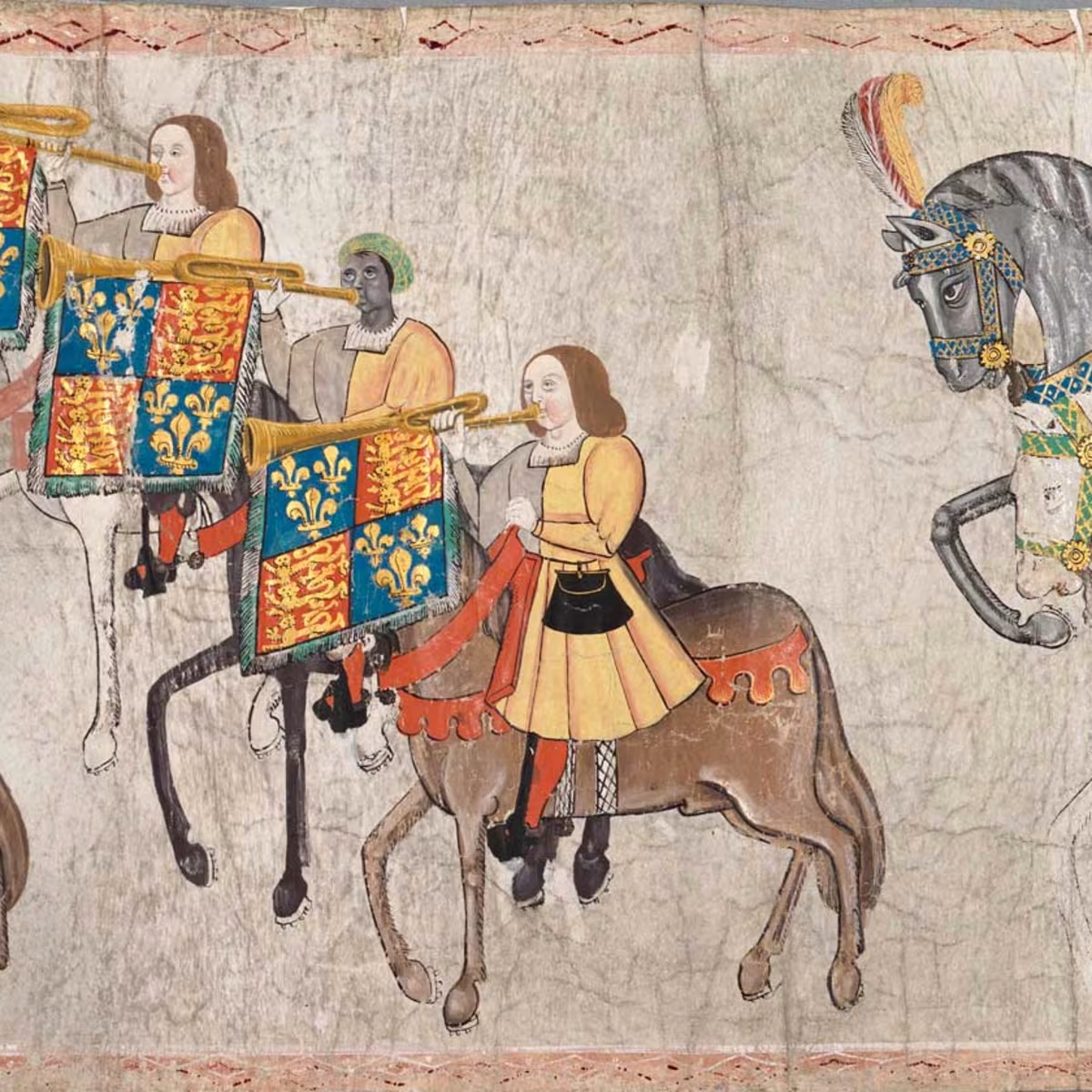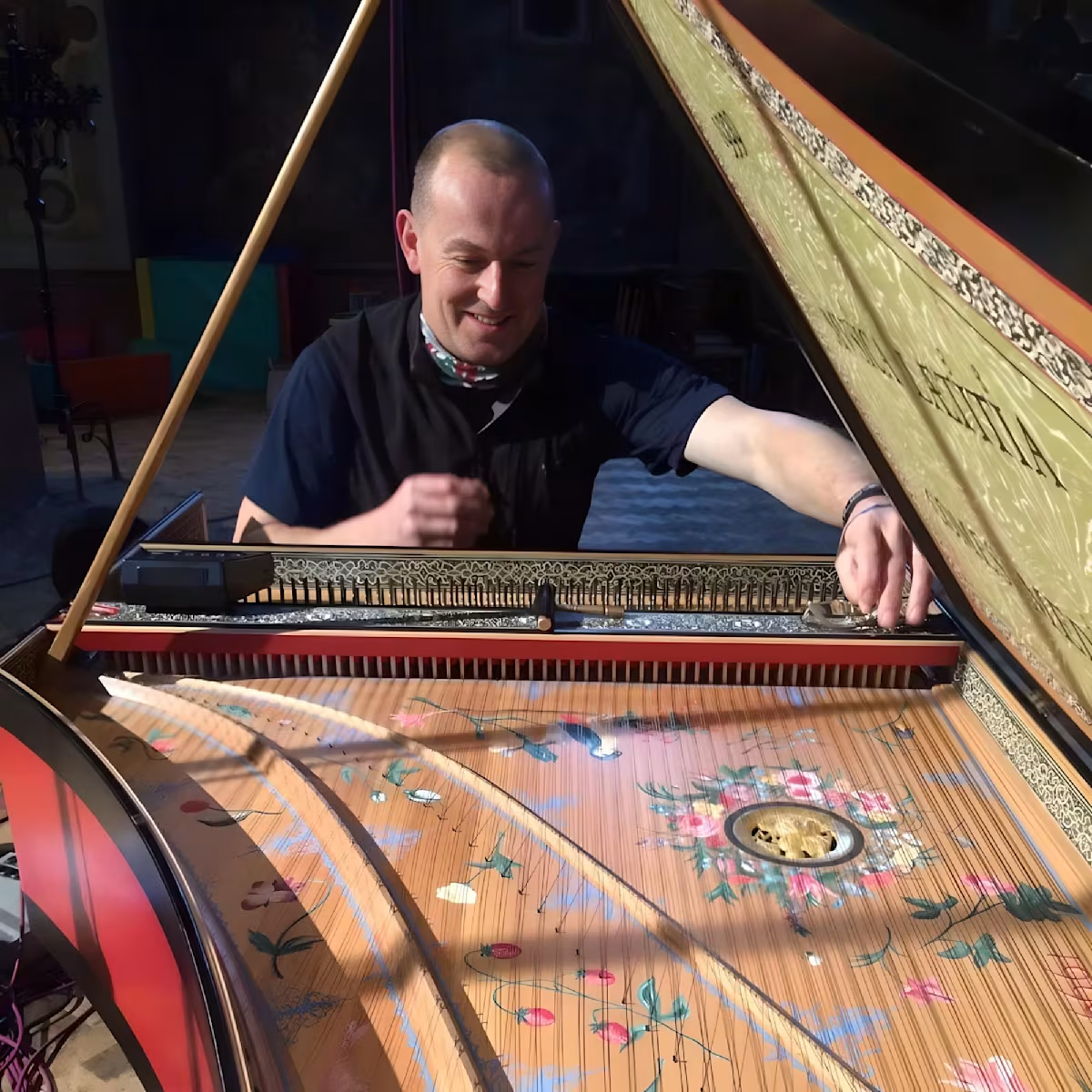Feature
Enchanting Norwich
1754–55 at the Assembly House: A Musical Microhistory
Share this

As the saying goes, ‘writing about music is like dancing about architecture’. But what about musicking about architecture? Norwich Baroque's programme, ‘Enchanting Norwich’, is a musical celebration of a spectacular piece of architecture: Norwich's iconic Assembly House. This building is still an important social and cultural hub for the city today; but when it was designed and re-built by architect Thomas Ivory in 1754, it was ground-breaking. It was the first place of its kind in Norfolk, offering an elegant public space for socialising, dancing and, of course, music making.
Throughout its history, the Assembly House has hosted performances by legendary figures such as Franz Liszt (1811–1886) and Nicolò Paganini (1782–1840). Mythology often surrounds these performances; the phenomenon of ‘Lisztomania’ was considered a genuine medical condition in the early nineteenth century, and Paganini famously whipped audiences into a frenzy with his playing. However, grand historical narratives, with their tendency to mythologise and immortalise, can sometimes feel distancing. In reality, it was the everyday activities at the Assembly House that made it special to Norwich.
To capture this essence, our programme zooms in on the exciting moment when Ivory’s Assembly House was first unveiled, offering a sort of musical micro-history of 1754–1755. A micro-history is like looking under a microscope rather than through a telescope. It reveals human peculiarities and details that allow us to connect with the past, painting a more relatable history than grand narratives. We’ll share these stories, breathing life into the people who lived, created, and experienced the music featured in ‘Enchanting Norwich.’
The programme aims to capture the buzz and excitement that must have filled the Assembly House during its first year in 1755. And what creates more buzz than fresh musical gossip? The appointment of William Boyce (1711–1779) as ‘Master of the King’s Musick’ following Maurice Greene’s (1696–1755) death would have been a hot topic! We’ll perform Boyce's Symphony No. 1 in B-flat major, a musical choice that sparked discussion even during a recent Royal occasion.
Perhaps some of the Assembly House's gentry subscribed to Charles Avison’s 1755 publication of his Op. 4 set of concerti grossi, influenced by the Italian style of his teacher, Francesco Geminiani (1687–1762). Avison counted several members of the Norfolk gentry, as well as local Norwich musicians like Mr Charles Lulman and The Norwich Music Society, among his subscribers. The merits of this music might have been debated at the Assembly House; after all, Avison was not shy about his opinions, even critiquing Mr Handel himself!
Ivory’s Assembly House must have seemed like a magical space to its first visitors. But what did magic mean to eighteenth-century eyes and ears? Our programme explores various portrayals of magic and enchantment on stage, including settings of Shakespeare’s A Midsummer Night’s Dream by John Smith, The Tempest by Thomas Arne, and an aria from Handel’s Alcina. Music offers a unique opportunity to transport our audience back in time, immersing them in a mid-eighteenth-century experience of magic.
An Enchanting Source
The inspiration for the title Enchanting Norwich comes from Geminiani’s The Enchanted Forest. This piece was written in 1754 as an accompaniment to a pantomime spectacle in Paris and was Geminiani’s first and only work composed for the theatre. Unfortunately, the Paris version didn’t survive. The music we’ll be performing is taken from a version Geminiani adapted for an unstaged benefit concert in London in 1761.
The advertisement for this benefit concert read:
“For the Benefit of Signora GAMBARINI. At the great Concert Room in Dean street, Soho, Wednesday, April 15, will be performed a grand new Piece of Music, called The INCHANTED FOREST. Composed by Signor Geminiani, who being lately returned to England, hath generously lent the abovementioned excellent Composition in favour of this Benefit.— The whole to be intermixed with several new Songs, and other Pieces, all composed by Signora Gambarini.”
Elisabetta de Gambarini (1731–1765) was an accomplished musician and possibly a student of Geminiani. She was also the first woman in Britain to publish a set of keyboard sonatas. We’ll be featuring one of the songs she may well have performed at this benefit concert, titled Behold and Listen.
The autograph score of the version of The Enchanted Forest that Geminiani loaned to Gambarini is held in the library of the Royal College of Music. It is the only source we have in Geminiani’s own hand. Visiting this manuscript was extraordinary—it felt like experiencing a piece of our micro-history up close.

Weaving Stories
‘The Enchanted Forest’ frames the programme, with excerpts at the beginning and end of each half. We start by ‘enchanting’ the ballroom before ‘disenchanting’ it at the concert's very end. The metaphor of the forest unfolding its leaves in unpredictable twists and tangles weaves the programme together, highlighting the messy reality of human life rather than the curated past presented in history books.
Geminiani is also at the root of this programme. He taught another central figure, Cecilia Young (1712–1789), one of the most celebrated sopranos of her time. One scandalous piece of musical gossip from 1755 was Young's public separation from her composer husband, Thomas Arne, the creator of Rule, Britannia!, during a musical trip to Dublin.
Young was a renowned soprano in her own right, described as ‘deliciously captivating.’ Arne owed much of his early success to her. She moved in London’s most prominent musical circles, and Handel wrote many title roles for her, including the enchantress Morgana in his opera Alcina. We’ll feature her iconic power aria ‘Tornami vagheggiar’ in the programme, showcasing Young in her youthful prime.
In 1755, Young sang the role of Titania in John Smith’s opera The Fairies, based on Shakespeare’s A Midsummer Night’s Dream, at the Theatre Royal, Drury Lane. This theatre has a special connection to Norwich. After completing the Assembly House, Thomas Ivory founded what became Norwich’s Theatre Royal, modelled on London’s Drury Lane! We’ll include the brilliantly ominous aria ‘You Spotted Snakes’ from Smith’s The Fairies, along with two of Arne’s beloved settings of Shakespeare, including Ariel’s aria from The Tempest, ‘Where the bee sucks, there lurk I.’
The final piece in the programme reveals another aspect of the Arne/Young affair: his elopement with his protégée, the young singer Miss Charlotte Brent (1734–1802). Brent had been lodging and performing with the Arnes during their Dublin stay. She sang the title role in Arne's first fully English pastoral opera, Thomas and Sally, performed in 1760. Notably, Young did not sing this role; her last role for Arne was as ‘Britannia’ in his opera Eliza, performed in 1754. Early editions act as records of these personal relationships, listing singers' names at the start of arias, tracing this intricate story.


Despite this sad moment in their story, there is fortunately a happy ending: Cecila Young and Thomas Arne were happily reunited after a twenty-year separation.
Thank you
We’re so grateful to Continuo Foundation and The Assembly House Trust for their support of this programme. We enjoyed sharing the life and works of two important women, Elisabetta de Gambarini and Cecilia Young, and bringing to life stories of the year 1754 – 1755 as a way of celebrating the legacy of Thomas Ivory’s astonishing contribution to Norwich: the iconic Assembly House.
Norwich Baroque performed "Enchanting Norwich" at the The Assembly House in October 2024.
Author: Rachel Stroud
Share this
Keep reading

How African Musicians Came to Medieval and Renaissance Europe
Ted Gioia tells how an African trumpeter ended up in Tudor England - and how Western music has always been multicultural.

In conversation: Andrew Wooderson
Continuo Connect meets maker and supplier of early keyboard instruments, Andrew Wooderson, who has a passion for fine craftsmanship.

The Ghost in the Machine
What information can musical machines provide about 'live' performers from the past, and what influence can this have on our modern HIP practice?


